How to Get Rid of Hornets in Your Yard Safely (8 Expert Tips)
-

- Last updated:

Nothing scares a new homeowner as the prospect of moving into a property already occupied by a nest of hornets. These hostile insects can be troublesome in a property. The thought of facing off a swarm of flying and stinging insects is enough to discourage even the boldest of people from going near.
Sure, hornets may be beneficial insects to the ecosystem of your yard. They help pollinate flowers and consume harmful backyard insects. However, it is best to get rid of them, especially if you have pets, children, or anyone with allergies in your household. These types of eusocial insects may look like wasps or bees, but they can easily render your outdoor space unusable with their painful stings.
If hornets have invaded your yard, do not fret. There are several methods you can utilize to get rid of them without compromising your safety. In this article, we will highlight helpful tips on how to identify different hornet species and how to get rid of their infestations in your yard. Read on to learn more.
Signs of Hornet Infestation and Why You Need to Get Rid of Them
You can easily detect the presence of these stinging insect species from their low buzzing sound. However, you are more likely to notice their aggressive nature as they fly around near their nesting site. If you notice several of them in the same area, be very wary because that would mean there is a colony around.
Another indicator of a hornet’s infestation is finding a hornet nest. Usually, hornets build their nests in holes in the ground or simply hang them. Therefore, you should inspect your yard for nest-like structures in your garage, under your porch roof, or even attached to a tree branch. Hornet’s nests are made from broken-down cellulose that they chew up from wood as they make their nests.
While hornets can cause minimal damage to your property, they can have serious consequences for the occupants. Their stings are quite painful, and unlike bees, which can only sting once, hornets can sting you as many times as they would like. Therefore, you should get rid of hornets in your yard as soon as you notice their presence.
The 8 Expert Tips on How to Safely Get Rid of Hornets
1. Sugar Bottle Trap
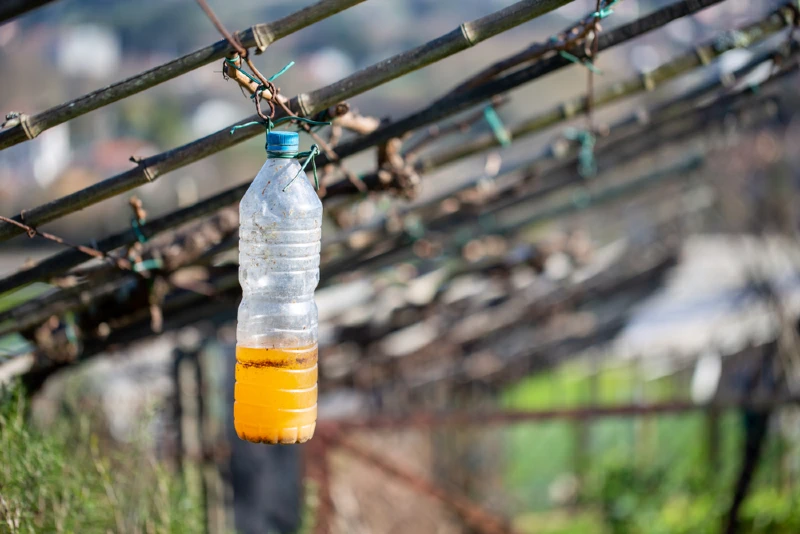
Just like bees, hornets are also big fans of sugary foods. This is what mainly attracts them to your yard. Hornets usually crave sugar in late summer and early fall. This is when you are most likely to spot them in your yard. Fortunately, you can set a hornet trap with a few basic household products.
You need only a plastic bottle of soda, preferably a 2-liter one for larger-sized traps or 12 ounces, water and sugar. Cut the top ¼ of the plastic bottle off, then flip it over and insert it into the bottle half so that the spout faces down. Use duct tape to secure it into position, then dissolve 1 part water with two parts sugar and add it into the bottle.
When ready, hang it outside, away from high-traffic areas, but high enough for the hornets to reach. You can even coat the spout part of the bottle with oil to prevent the hornets from flying away.
Consult a PEST-CONTROL expert
Find a pest-control specialist in your area, and get free, no-commitment estimates for your project.

2. Vinegar Trap

While sugar traps may be effective at catching hornets, they may also attract beneficial insects such as bees. Therefore, you can opt to trap stinging insects with a product like vinegar. You can create the same bottle trap, but instead of adding the sugar solution, you add a cup of apple cider vinegar.
Mix the vinegar with a drop of liquid dish soap, and then add something to lure the hornets into the trap. This could even be a piece of meat hanging from a string or a cup of sugar mixed with the vinegar concoction. After creating your trap, hang it where hornets like to buzz around.
Alternatively, you can trap the hornets with a bucket full of apple cider vinegar. Simply mix some dish soap, water, and apple cider vinegar in an empty bucket. The hornets will be attracted to the solution, but once they fall into the mixture, they will not be able to escape. You can even add a protein base to make the solution more effective.
3. Peppermint Spray

Hornets abhor the scent of peppermint. According to Tips Bulletin, you can create a powerful hornet-deterring solution by mixing 2 cups of water with 30 drops of peppermint essential oil. Add 2 tablespoons of liquid dish soap into a spray bottle and spray in the area hornets like to fly around.
Other experts recommend soaking cotton balls in the peppermint solution to prevent the hornets from being stuck. However, you may have to replace the cotton balls often. You can tuck the peppermint-soaked cotton balls into the nooks and crevices they had made their nests.
To make the peppermint solution powerful enough to take down a hornet colony, create a solution of white vinegar and water. Add 20 tablespoons of peppermint oil per ounce of the solution and a tablespoon of soap detergent per 1 cup of the mix.
Since hornets are most active during the day, you may have to approach their nest at night and spray the solution in powerful bursts until completely soaked. You can repeat the same process in the hornet-prone areas to prevent them from future nest building.
4. Borax
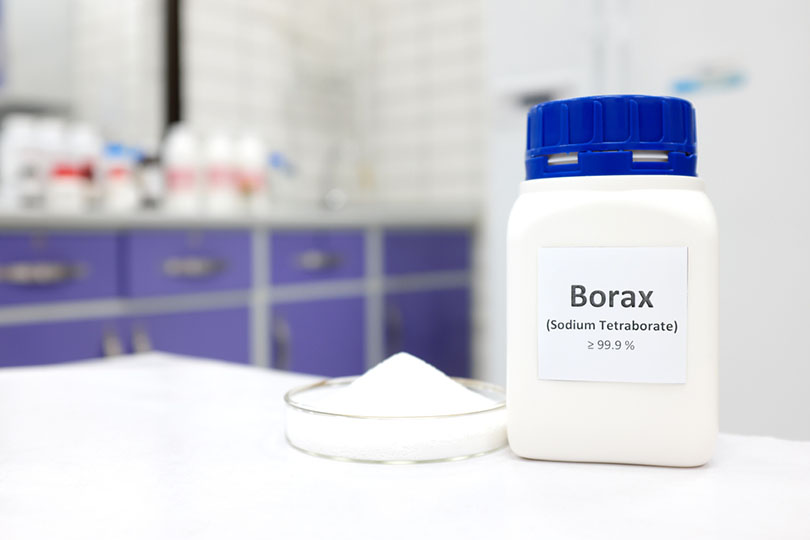
Borax is a relatively inexpensive solution that is very deadly to hornets. If you lack the time or the patience to get hornets out of your yard, you can create a tempting lure by mixing borax with something sweet yet sticky. Add the mixture into old container lids and place them outside the hornet nest. This sweet concoction will poison hornets.
Unfortunately, the solution is also dangerous to pets and other animals, so ensure that you position it where only hornets can reach. In addition, you should get rid of dead hornets from the ground in case your pets decide to nibble on them.
Alternatively, you can opt to use diatomaceous earth pesticides to kill hornets by dehydrating them to death. Simply add cinnamon and talcum powder to your solution, and it will repel them off your yard.
Whichever store-bought powder you decide to use, sprinkle a generous amount near their nest entrances, especially if located underground or in walls.
5. Submerge the Hornets Nests
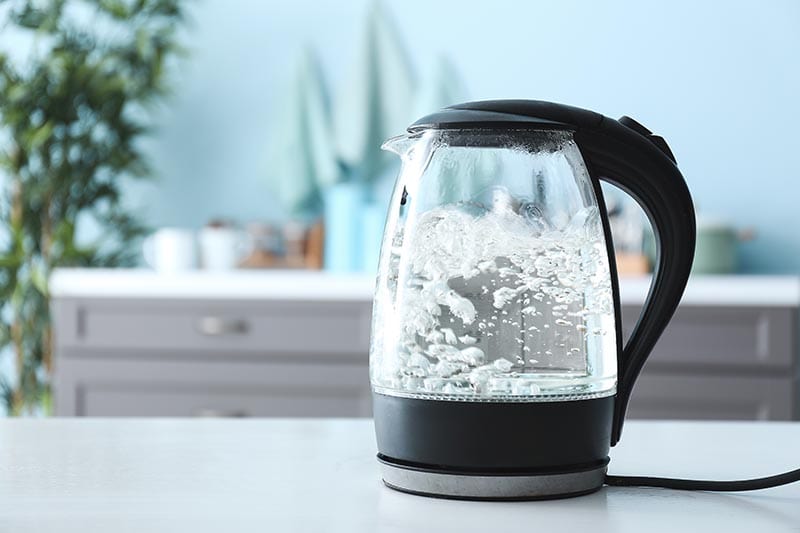
Instead of using pesticides for hornet control, you can also choose to drown them. If you can carefully remove aerial nests, you can submerge them to get rid of the hornet. Remember, hornets are active during the day, so you should only consider using this method under the cover of darkness. Cover the nest complete with a piece of cloth, tie the top off, put the bag in water, and weigh it down until it sinks.
Never burn or flood an open or underground nest with water because irritated hornets can fly out and attack you. However, you can coat the hornet wings by adding soap to the water, thus preventing them from escaping.
For ground-level nests, add liquid dish soap to boiling water and add it into a heat-resistant watering can. Then, pour the mixture into the entrance of the hornet nest. If possible, cover the opening with a bucket or bowl.
6. Vacuum the Hornets
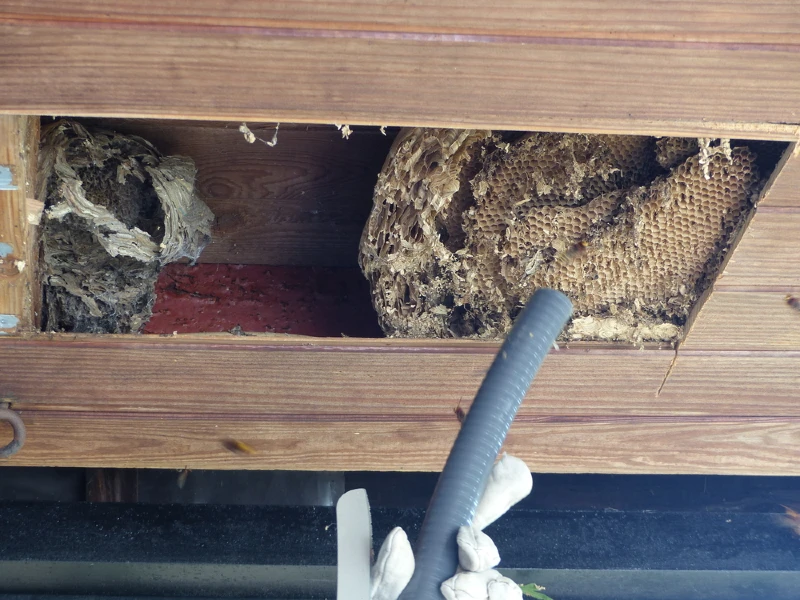
If you are dealing with hornets nesting in an enclosed area like attics, some of the aforementioned methods may not be effective. The best way to get rid of them in such a scenario would be to simply vacuum them.
Here, a shop vac handy is the ideal tool. Simply add water to the shop vac’s tub and mix it with dish soap. After putting on protective clothing, approach the hornet nest at night. Position the nozzle near the nest entrance, turn it on and leave.
The soapy water in the vacuum will attract the stinging insects, which will be sucked into the shop vac and dry. Ensure that the shop vac runs for a while so that you can get rid of as many hornets as you can. If your hornet nest is perched high up, you can secure a mop handle or pole to the hose of the vacuum with bungee cords. Lean it against a wall with the nozzle close to the nest’s entrance.
7. Keep Your Garbage Cans Clean and Well Contained

During hot summer days, hornets cannot resist the smell of garbage. They end up being too focused on the source of the smell that they ignore any humans or pets in the vicinity. Even if your trash bins are well protected, the hornets can even fly in from the neighbor’s nests.
So, you might want to regularly rinse out your trash bins, especially if you notice an odor coming off them. Furthermore, keep the trash cans closed to minimize access to the trash inside.
8. Seek Professional Help
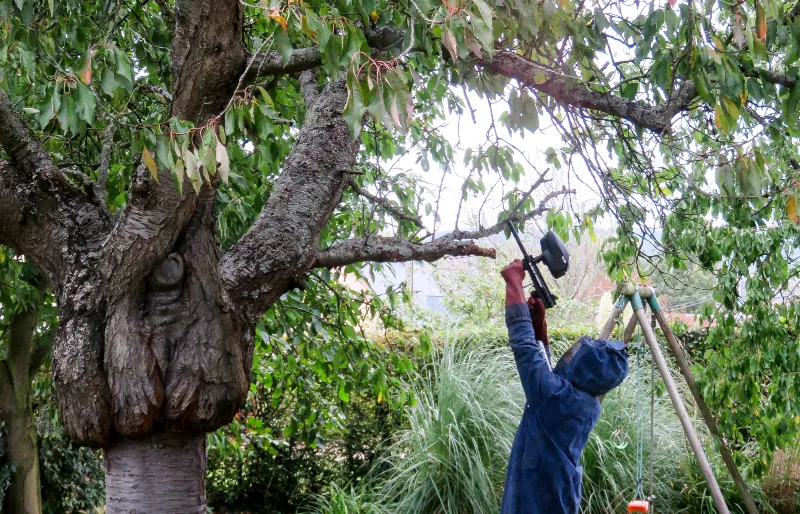
Never attempt to get rid of hornets by yourself, especially if you are allergic to their venom. You might be tempted to trap or spray, but the hornets can escape unexpectedly. If the venom is poisonous to anyone in your household, it is not worth taking the chance.
If the nests are too high to reach or the other methods are not effective, it is best to contact professional pest control companies. They are equipped with the proper tools and skills to safely get rid of hornets in your yard.
Furthermore, if the hornets keep coming back, a professional will advise you on treatments to deter them from your property.
The Difference Between Hornets, Yellow Jackets, and Wasps
Before choosing an appropriate course of action, you first need to identify the type of stinging insects nesting in your yard. This is because the methods of getting rid of wasps are very different from those used to get rid of hornets. Keep in mind that yellow jackets and hornets are the most aggressive species, so you need to be extra cautious when dealing with them.
Here are some of the telltale differences between different stinging insects commonly found in yards.
Usually, most people mistakenly refer to wasps as hornets. This is common in the US because hornets are not native to the region. The European hornet was among the first species in the US, which came with early human settlers in the mid-1800s.
You can differentiate true hornets from wasps via a rounded abdomen and a larger vertex (part of the head behind the eyes). True hornets are members of the Vespa genus; however, other stinging insects are also referred to as “hornets”.
Yellow jackets may not be members of the Vespa genus but are also referred to as hornets. For instance, a bald-faced hornet is a type of yellow jacket, but not a true hornet because it does not belong to the Vespa genus.
Wasps are different from yellow jackets and hornets because they tend to have a narrower waist between the abdomen and thorax. They are not considered an aggressive species, but they will definitely sting you if you interfere with their nests.
Generally, most gardeners hate hornets because they primarily feed on other insects including wasps and honeybees.
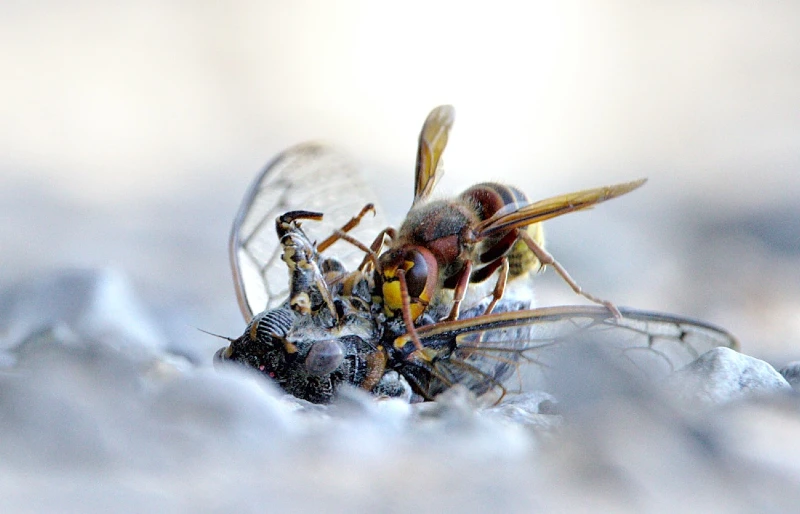
Common Types of Hornets in the US
There are different hornet species spread across the world:
- European Hornet: These stinging insects are common in the US and measure about an inch long. They also feature a yellow and redhead with a red-striped and brown abdomen. This hornet species is mostly found in woodland areas and make nests in hollow trees and other naturally occurring cavities found at least 6 feet from the ground. However, you can still find their nests in barns, attics, and wall voids. European hornets are mostly found in the eastern US, all the way to eastern Dakota and southern Illinois, and down to New Orleans.
- Asian Giant Hornet: The Asian Giant hornet measures 1.75 inches and is the largest hornet species. They can be identified with a brown to black abdomen and light orange head with yellow-orange bands. Recently, giant Asian hornets have attracted a lot of attention in the US gaining the reputation of “murder hornet. In fact, they have been known to kill at least 50 people in Japan every year. Not only that, since they feed on different insect species, they are prone to causing undesirable ecological consequences to Native American Insect species.
Conclusion
Hornets can be beneficial insects to have in your yard if they are pollinating flowers or preying on other harmful insects. However, they can be dangerous to humans and pets, especially if nesting near outdoor relaxing spaces.
There are several ways you can get rid of them without harming yourself. You can trap hornets and wasps with a plastic bottle with a sugar or vinegar solution inside. You can also opt for non-toxic pesticides specifically made for hornets, but this can be dangerous to household occupants. You can also opt to vacuum them if their nests are located in hard-to-reach areas.
While it is relatively safe to employ some of the methods yourself, it is always best to contact a professional, especially if one is allergic to hornet venom. Whichever method you choose, ensure that you are always protected as you get rid of hornets in your yard.
Featured Image Credit: koala0815, Pixabay
Contents

